Best PHP Programming Guides to Buy in October 2025
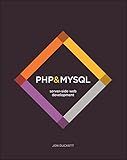
PHP & MySQL: Server-side Web Development


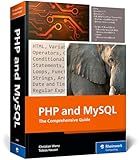
PHP and MySQL: The Comprehensive Guide to Server-Side Web Development with PHP 8 – Build Dynamic Websites with Database Integration, Security, and More (Rheinwerk Computing)



Learning PHP, MySQL & JavaScript: A Step-by-Step Guide to Creating Dynamic Websites (Learning PHP, MYSQL, Javascript, CSS & HTML5)


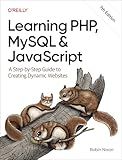
Learning PHP, MySQL & JavaScript: A Step-by-Step Guide to Creating Dynamic Websites


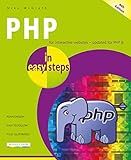
PHP in easy steps: Updated for PHP 8


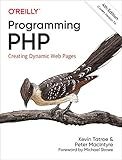
Programming PHP: Creating Dynamic Web Pages


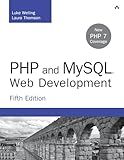
PHP and MySQL Web Development (Developer's Library)


Classes and objects are essential components of object-oriented programming in PHP. They allow you to encapsulate data and behavior into reusable structures called classes, and then create instances of these classes called objects. Here's a brief explanation of how to use classes and objects in PHP:
To define a class, you use the class keyword followed by the name of the class. The class consists of variables called properties, and functions called methods, which define the behavior of the class. For example:
class Car { public $brand; public $model;
public function startEngine() {
echo "Engine started.";
}
}
In the above example, the Car class has two properties: $brand and $model, and one method: startEngine().
To create an object from a class, you use the new keyword followed by the class name followed by parentheses. For example:
$myCar = new Car();
Now, $myCar is an instance of the Car class.
To access an object's properties or methods, you use the arrow operator (->). For example, to set the value of a property:
$myCar->brand = "Toyota";
To call a method:
$myCar->startEngine();
You can also pass arguments to methods:
class Math { public function add($num1, $num2) { return $num1 + $num2; } }
$mathObj = new Math(); $result = $mathObj->add(2, 3); // $result will be 5
Additionally, you can define a constructor method, which is automatically called when an object is created from the class. This method is defined with the __construct() function. For example:
class Person { public $name;
public function \_\_construct($name) {
$this->name = $name;
}
}
$personObj = new Person("John"); echo $personObj->name; // Output: John
These are some basic concepts of using classes and objects in PHP. They provide a way to organize and structure your code, making it more modular and maintainable.
How to implement an interface in PHP classes?
In PHP, interfaces define a contract of methods that a class must implement. To implement an interface in a PHP class, you can follow these steps:
- Define an interface: Start by defining an interface using the interface keyword. Inside the interface, declare the methods that classes implementing this interface should have.
interface MyInterface { public function method1(); public function method2($param); }
- Implement the interface: To implement the interface in a class, use the implements keyword followed by the interface name after the class declaration.
class MyClass implements MyInterface { // Implement the methods declared in MyInterface
public function method1() {
// Implementation for method1
}
public function method2($param) {
// Implementation for method2
}
}
- Implement the methods: Inside the class, provide the implementation for each method defined in the interface.
- Use the class: You can now use the class MyClass as an object and call the methods defined in the interface.
$obj = new MyClass(); $obj->method1(); $obj->method2($param);
By implementing an interface, you ensure that the class provides the required methods, which helps in maintaining consistency and enabling polymorphism in object-oriented programming.
How to call a parent class constructor in PHP?
To call a parent class constructor in PHP, you can use the parent::__construct() syntax within the child class constructor. Here's an example:
class ParentClass { public function __construct() { echo "Parent class constructor called."; } }
class ChildClass extends ParentClass { public function __construct() { parent::__construct(); // Calling parent class constructor echo "Child class constructor called."; } }
$childObj = new ChildClass();
In this example, when you create an object of ChildClass, both the parent and child class constructors will be called. The output will be:
Parent class constructor called. Child class constructor called.
How to use classes and objects in PHP?
To use classes and objects in PHP, you need to follow these steps:
- Define a class: Start by defining a class using the class keyword, followed by the name of the class. Inside the class, you can define properties (variables) and methods (functions) that will be associated with all objects of this class.
class MyClass { // Properties public $property1; private $property2;
// Methods
public function method1() {
// code here
}
private function method2() {
// code here
}
}
- Create objects: Once the class is defined, you can create objects (instances) of that class by using the new keyword followed by the class name and parentheses.
$object1 = new MyClass(); $object2 = new MyClass();
- Access properties and methods: After creating objects, you can access their properties and methods using the object name, followed by the -> operator and the property or method name.
// Accessing properties $object1->property1 = "Hello"; echo $object1->property1; // Output: Hello
// Accessing methods $object1->method1(); // Calls the method1() function
- Constructor and destructor: You can define a constructor method that gets automatically executed when a new object is created using the __construct() magic method. Similarly, you can define a destructor method that is called when an object is no longer referenced.
class MyClass { public function __construct() { // Constructor code here }
public function \_\_destruct() {
// Destructor code here
}
}
- Object inheritance: PHP supports inheritance, which allows you to create child classes that inherit properties and methods from a parent class. Use the extends keyword to specify the parent class.
class ChildClass extends ParentClass { // additional properties and methods }
With these steps, you can effectively use classes and objects in PHP to organize your code into reusable and modular units.
What is an object in PHP?
In PHP, an object is an instance of a class. It is a data structure that contains both data (properties or attributes) and methods (functions or behaviors) defined within the class. Objects allow for the implementation of object-oriented programming principles such as encapsulation, inheritance, and polymorphism. They can be created using the "new" keyword followed by the class name, and then accessed and manipulated using object-oriented syntax.
